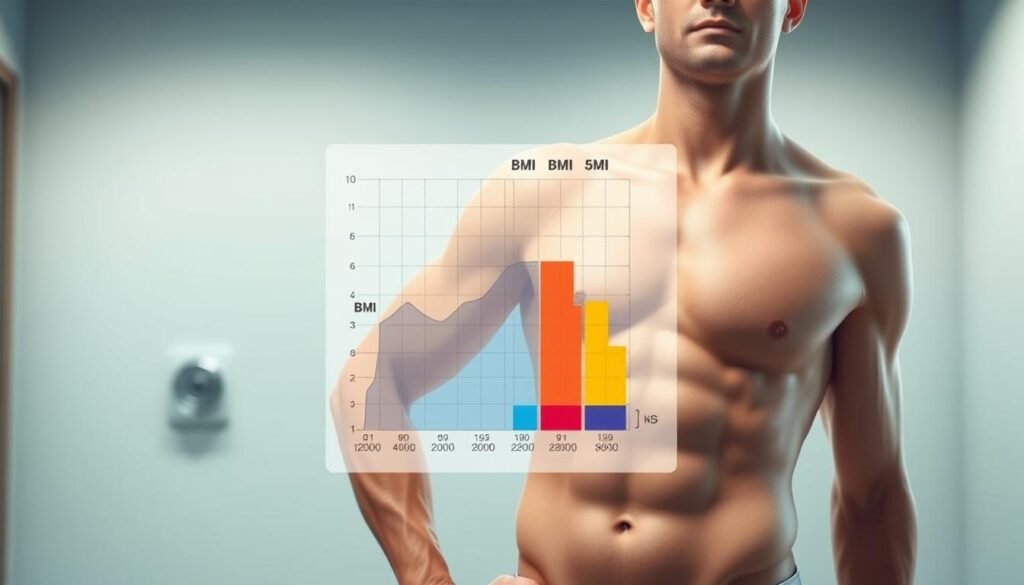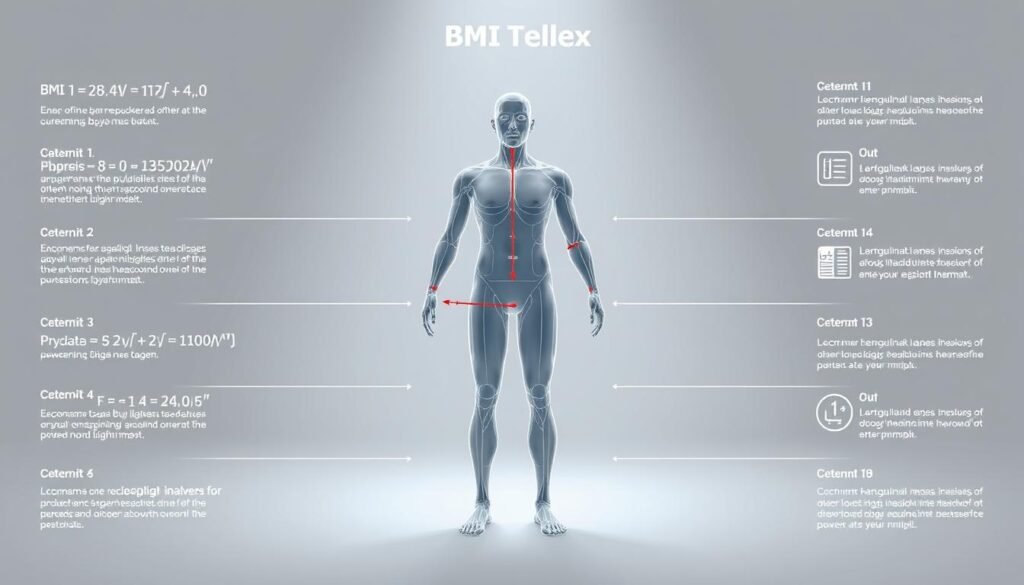
Understanding your health often starts with a single number—and that’s where BMI calculation comes in. This guide offers clear, practical insight into what Body Mass Index really means, how it’s calculated, and why healthcare professionals continue to use this rapid screening tool in clinical settings. Whether the number feels validating or surprising, we’re here to help you interpret it with context and confidence.
We walk through the simple math that links your weight and height to a single mass index value. Then we show the easiest way to calculate bmi and read an adult chart at a glance.
This tool flags potential health risk for heart disease, stroke, and Type 2 diabetes in most people. We also note when BMI falls short — for athletes, older adults, and others — and when to add body composition tests.
Later, we compare evidence-based screening with supplement marketing, including a clear mention that a HepatoBurn review appears further on. Our aim is to help you turn one number into smart next steps for sleep, movement, and nutrition.

Key Takeaways
- Body mass index is a quick screening tool linking weight and height.
- We calculate bmi to guide conversations, not to give a final diagnosis.
- Higher values often signal more body fat and greater health risk.
- BMI works for many people but misses nuances for some groups.
- Use BMI results with other tests and clinical advice for action plans.
- We will compare screening facts with supplement claims like HepatoBurn later.
What is body mass index and why we use it today
A straightforward index derived from weight and height helps us identify potential nutrition and disease risks.
Body mass index is a mass index based on weight and height that serves as a low‑cost screening tool. We and clinicians use it to categorize weight types and flag possible health conditions. It is a starting point for conversation, not a medical diagnosis.
For most adults, this index correlates with body fat and with higher risk for heart disease, stroke, and Type 2 diabetes. A higher number often signals more adiposity and greater visceral fat, which raise metabolic risk.
Very low values also matter. Low body mass can point to malnutrition, anemia, weak immunity, osteoporosis, or fertility problems and usually prompts further assessment.
When and how clinicians follow up
- We use the index for triage and trend tracking; it guides lifestyle talks and testing.
- Providers add waist measures, skinfolds, or DEXA to refine estimates of body fat.
- For children and teens, age and sex matter—CDC percentiles replace the adult chart.
| Use case | What it tells us | Follow-up |
|---|---|---|
| Routine clinic visit | Quick risk stratification | Lifestyle counseling, labs if high risk |
| Athletes or older adults | May misestimate body fat | Use body composition tests like DEXA |
| Children and teens | Age‑ and sex‑specific growth percentiles needed | Use CDC percentile charts |
Note: We will cover exact methods to use the index and read adult charts next, and we’ll keep clinical definitions distinct from any HepatoBurn review that appears later.
bmi calculation: step-by-step methods to calculate BMI accurately

We show precise steps to turn measured weight and height into a clear mass index number.
Imperial method: pounds × 703 and height in inches
Use the imperial formula to calculate bmi exactly as clinicians do. Multiply weight in pounds by 703, then divide by height in inches twice (height squared).
Metric method: kilograms and meters squared
For the metric approach, divide weight in kilograms by height in meters squared (kg/m²). This gives the same body mass index concept without converting units.
Worked example and quick checks
Example: 180 pounds at 65 inches. 180 × 703 = 126,540. 126,540 ÷ 65 = 1,946.769. 1,946.769 ÷ 65 ≈ 29.95. That result sits above the healthy adult range (18.5–24.9).
- Convert feet and inches to total height inches first to avoid rounding errors.
- Measure weight with light clothing and height without shoes against a wall.
- Common mistakes: mixing units, forgetting to square height, or rounding too early.
- Use a trusted online tool when short on time to speed the math and reduce input errors.
Quick note: Record the date and the value so we can track trends. The number alone does not fully assess risk developing health problems; context matters and we cover interpretation next.
Interpreting your BMI results with the adult BMI chart
Finding your spot on the adult chart turns a number into useful context about likely body fat and risk.
Adult categories map a mass index to standard groupings: underweight <18.5; healthy weight 18.5–24.9; overweight 25–29.9; Class I obesity 30–34.9; Class II 35–39.9; Class III ≥40.
What each category typically signals
Use the chart by finding your value and matching it to a category. Healthy weight usually means lower average body fat and lower population risk for heart and metabolic disease.
Higher values often track with rising risk for heart disease, stroke, and Type 2 diabetes. Very low values may point to undernutrition, anemia, or bone issues like osteoporosis.
Putting the chart into action
- If your number falls in the obesity range, providers may order labs such as a lipid panel or metabolic tests.
- Two people with the same value can have different risks depending on body fat distribution and family history.
- Re-check height inches and weight if a result looks inconsistent, and use consistent methods over time.
“Categories guide a conversation, not a final diagnosis.”
| Category | Range | Typical follow-up |
|---|---|---|
| Underweight | <18.5 | Nutrition review, labs for deficiencies |
| Healthy weight | 18.5–24.9 | Routine screening, lifestyle support |
| Overweight / Obesity | 25–29.9 / ≥30 | BP checks, labs, waist measure, targeted counseling |
Limitations of BMI and better ways to assess body fat and health risks

Quick screening tools shine for population checks, but they fall short for many individual cases.
Key limitations: the mass index groups muscle, bone, and fat into one number. A very muscular person may register high despite low body fat. An older adult can read as “normal” while carrying more fat and less muscle.
Some groups should not rely on the standard bmi chart alone: athletes, pregnant people, adults over 65, and anyone with wasting or fluid shifts. Age, sex, and occupation all change how the index reflects real health risks.
Why distribution and extra tests matter
Where fat sits matters for the heart and metabolic disease risk. Waist circumference helps show abdominal fat that the index misses.
Complementary measures clinicians use
- Waist measurement at the iliac crest to gauge abdominal fat.
- Skinfolds or DEXA to separate fat and muscle when precision matters.
- Lab screening—lipids, glucose/A1C, and CMP—to link weight and body composition to health conditions.
| Measure | What it shows | When to use |
|---|---|---|
| Waist circumference | Abdominal fat and cardiometabolic risk | Routine clinic checks |
| Skinfold calipers | Estimated body fat at sites | Field assessments, repeated measures |
| DEXA scan | Precise lean and fat mass | When exact amount body fat matters |
Practical note: We recommend pairing measures with function checks (grip, walking speed) and with lifestyle steps: protein, resistance training, fiber-rich foods, and waist tracking.
“Supplements like HepatoBurn are not substitutes for screening or treatment; evidence for sustained fat loss is limited and interactions are possible.”

Conclusion
Conclusion
This final note pulls key steps together and points to practical next actions.
We recap the right way to calculate BMI: use pounds × 703 divided by height in inches squared, or kg/m² for metric, then read against the adult chart (healthy weight 18.5–24.9) to gauge risk and guide follow-up.
Use waist measures, labs, and clinical context to refine what the index shows. Small, steady changes in diet, resistance and aerobic exercise, sleep, and stress reduce heart and metabolic risk more than quick fixes.
On supplements: products like HepatoBurn are not substitutes for care. They do not diagnose or treat disease and deserve cautious use after medical advice.
Calculate today, record pounds and inches, set one process goal, and check back with a clinician if results fall outside the healthy weight range.
FAQ
What is body mass index and why do we use it today?
Body mass index is a screening tool that compares weight to height to estimate whether an adult falls into underweight, healthy weight, overweight, or obesity categories. We use it because it’s a quick, inexpensive way to identify people who may need further evaluation for health risks like heart disease, stroke, or Type 2 diabetes. It is not a medical diagnosis—clinicians pair it with other measures before making decisions.
How does this index relate to body fat and disease risk?
Higher index values often correlate with greater body fat and higher risk for conditions such as coronary heart disease, stroke, and Type 2 diabetes. Lower values can indicate undernutrition and related health problems. However, the index doesn’t show where fat is stored or how much is muscle, so we combine it with waist circumference and clinical tests to assess risk more accurately.
When isn’t the standard index appropriate for children and teens?
Children and adolescents grow at different rates, so we use age- and sex-specific growth charts rather than the standard adult categories. Pediatric percentiles account for developmental changes; therefore, adult thresholds can misclassify growing youth.
What are the step-by-step methods to calculate this measure accurately using Imperial units?
Using Imperial units, we take weight in pounds and height in inches. The formula multiplies weight by 703, then divides by height squared. For example, measure height and weight precisely, square the height in inches, multiply weight by 703, and divide to get the result.
How do we calculate it using the metric method?
With metric units, we divide weight in kilograms by height in meters squared (kg/m²). Measure height in meters, square that number, then divide the kilogram value by the squared height to get the index.
Can you show a worked example using weight 703 pounds as mentioned?
For educational purposes, if a person weighed 703 pounds, we would use the Imperial formula: multiply 703 by 703, then divide by the person’s height in inches squared. Because the result depends heavily on height, we must include height to interpret the outcome; extremely high weight without considering height indicates severe obesity and high health risk, and urgent clinical evaluation is needed.
What quick tips help us get faster and more accurate results?
Use a reliable online calculator or medical app to avoid manual errors. Measure height without shoes, use a calibrated scale, and if possible take measurements at the same time of day. For people with very high muscle mass, pregnancy, or older adults, rely on additional assessments beyond the index.
How do we interpret results with the adult chart and categories?
Adults fall into categories: underweight, healthy weight, overweight, and obesity classes I–III. These ranges help identify risk levels: values in the overweight and obesity ranges generally signal higher risk for chronic disease. Clinicians consider other risk factors—blood pressure, lipids, and family history—before recommending interventions.
What health risks are tied to low and high values?
Low values may signal malnutrition, weakened immunity, or osteoporosis risk. High values increase the likelihood of cardiovascular disease, Type 2 diabetes, joint issues, and some cancers. Risk rises with higher categories, but personal history and other measures determine actual disease risk.
Who should not rely on the standard index as the sole measure?
We advise caution for athletes with high muscle mass, pregnant people, older adults, and some ethnic groups where health risk appears at different thresholds. These populations may be misclassified, so clinicians use complementary tools to evaluate health.
Why does the index miss important information about body composition?
It does not distinguish fat from muscle or show fat distribution. Two people with the same value can have very different body fat percentages and risk profiles. Waist circumference and imaging help reveal abdominal fat, which more strongly predicts metabolic risk.
What are better or complementary ways to assess body fat and health risk?
We recommend combining the index with waist circumference, skinfold measurements, bioelectrical impedance, and, when available, DEXA scans. Laboratory screening for blood glucose, lipids, and blood pressure checks rounds out risk assessment for a fuller health picture.